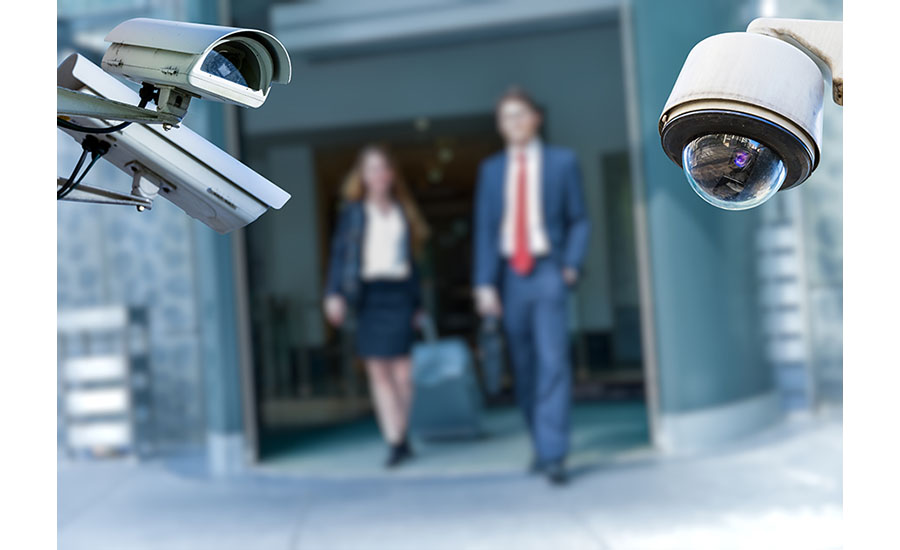PRIVACY
Balancing Privacy Concerns With Video Monitoring Capabilities
As video monitoring becomes more popular, the industry has a responsibility to protect consumers’ privacy.


According to Parks Associates, 22 percent of U.S. broadband households are concerned their images may be recorded against their will. Source: Consumer Concerns on Security/Privacy Issues, Parks Associates, 2019


As the technology of video monitoring grows in capabilities and use cases, another concern begins raising its head: privacy. Recently, some countries have looked to use this capability to help with the coronavirus outbreak and enforcing stay-at-home and social distancing mandates. In China, CCTV cameras are being installed outside (and sometimes even inside) the apartments of those under quarantine to ensure they don’t leave. In South Korea, the government is using credit card transactions, smartphone location data and CCTV video to create a system where confirmed cases are tracked. And while it may be hard to imagine the American government installing cameras in people’s homes, 22 percent of U.S. broadband households are concerned their images may be recorded against their will according to research firm Parks Associates.
More than 100 human rights and privacy organizations from around the globe issued a joint statement in April calling on governments to ensure the use of digital surveillance technologies to fight the pandemic will respect human rights.
“Technology can and should play an important role during this effort to save lives, such as to spread public health messages and increase access to health care,” the statement reads. “However, an increase in state digital surveillance powers threatens privacy, freedom of expression and freedom of association in ways that could violate rights and degrade trust in public authorities — undermining the effectiveness of any public health response.”
The statement included a list of eight conditions the organizations believed governments should agree to before responding to the COVID-19 pandemic with increased digital surveillance. The conditions included transparency, a limit on how long the monitoring can go on for and assurance that personal data is only being used for purposes responding to COVID-19. The statement also brings up another privacy issue that’s been plaguing the security industry for a while: the fear that facial recognition technology may lead to human rights abuses against racial minorities and those living in poverty.
“Based on the legislation we monitor throughout the country, the biggest concern [surrounding privacy and video monitoring] rests with facial recognition technology and how it is used,” says Chris Heaton, vice president of advocacy and public affairs at the Electronic Security Association (ESA).
Facial recognition has been gaining popularity among providers of video monitoring services, as it can determine whether or not someone is a threat, reducing the number of false alarm dispatches. The technology could be used in a variety of new ways in the post-COVID-19 world, such as health monitoring and ensuring compliance with social distancing guidelines.
“The facial recognition aspect of video analysis can get a little disconcerting for those that like their privacy,” says Helen Heneveld, president of Bedrock Learning, a training solutions company in Holland, Mich. “With facial recognition, they can identify where you are and when, and track your movements. And the other aspect is that footage is here forever — it’s saved data. It’s a double-edged sword and I think in today’s world, people want privacy more than accuracy. It’s a trade-off.”
These specific cases demonstrate the need for the video monitoring industry and its providers to ensure that their practices and procedures take privacy into account — both to satisfy growing privacy laws and end user concerns.
Is Temperature Monitoring an Invasion of Privacy?
Since the beginning of the coronavirus outbreak, the security industry has been hard at work creating innovative technologies that monitor citizens’ health. But what sort of privacy concerns should be considered when introducing these new products?
Salvatore D’Agostino of IDmachines says thermal cameras typically provide less of a privacy risk than normal video surveillance cameras, because they don’t provide an image that identifies someone.
“Privacy issues come into play, for the most part, when personally identifiable information is generated,” D’Agostino says. “If there is a correlation of the image to some other means of identification, such as a card swipe or geographic position, then privacy concerns come into play.”
Many companies, such as Rapid Response Monitoring, are testing out temperature sensing technologies in their own buildings before offering them to customers.
STANLEY Security has been using thermal cameras to identify intruders for a while now. In the current environment, where organizations are seeking more ways to screen staff and visitors coming onto their property, STANLEY is also offering thermal solutions for human temperature detection.
“When it comes to human temperature detection solutions, there may be privacy concerns related to collecting a person’s body temperature, whether that person is an employee or not,” Steve Walker says.
He adds that the Equal Employment Opportunity Commission (EEOC) in the U.S. has said the fact that an employee had a fever or other symptoms could be subject to confidentiality requirements. So depending on their location, businesses may need to obtain consent and provide disclosures about how this health information is stored and used.
“On its face, video surveillance and health can seem like a fraught mix from a privacy perspective,” says Sean Foley of Interface. “At a practical level, however, the stakes are very low with thermal cameras. Importantly, the data is generally not recorded at all.”
The Fear of Big Brother
Rapid Response Monitoring, Syracuse, N.Y., started offering video monitoring services in 2008. And while Vice President of Technology and Innovation Morgan Hertel says video is still not a big chunk of Rapid Response’s business, the company is now monitoring close to 25,000 cameras, and offers everything from basic alarm verification to interactive video with voice and analytics.
“There are people up in arms over facial recognition — the typical Big Brother stuff — but I personally have never had to deal with any type of privacy invasion issue,” Hertel says. “It seems like consumers are getting more comfortable with video being a part of their lives every day, so there aren’t as many conspiracy theories as there used to be. The U.S. is years behind the U.K. in video and how it’s used for surveillance.”
“There will be no surveillance state enacted in the U.S., even for the noble purpose of eradicating COVID-19,” says Sean Foley, senior vice president of Interface Security Systems, a managed services provider delivering a complete suite of video monitoring out of Earth City, Mo. “Our civil liberties, protections and traditions are simply too strong. Even if we collectively decided to deploy surveillance capabilities to a China-like degree, the infrastructure investment would be massive with limited effectiveness. The technology, though exciting, is simply not at a point where governments can effectively tie video to identity, to health status.”
Salvatore D’Agostino, CEO of IDmachines, Brookline, Mass., and member of the Security Industry Association’s (SIA) privacy advisory board, says that in almost all cases, a lack of transparency around video monitoring is what drives privacy concerns.
“[Privacy concerns] most often derive from covert use cases in public spaces which then cause a justifiable backlash,” D’Agostino says. “This can be looked at as surveillance without consent. Another example is the use of video analytics for emotion tracking . . . As someone who has been involved in the deployment of video analytics and facial recognition for over 35 years, I have learned along with my colleagues — and we advise our clients — that security technologies are most effective when deployed in a cooperative and transparent manner.”
D’Agostino relates the issue of privacy and video monitoring to cyber security — everyone needs to participate and be on board if it’s going to be effective.
“It’s a fallacy to think that privacy and security are counter purposes,” D’Agostino says. “The intersection is the protection of personal information and people’s rights — particularly as an increasing body of legislation in the United States, and around the world, has become the law.”
So What Are the Rules?
Regulations around the use of video monitoring mostly vary state to state and city to city. In Europe, the General Data Protection Regulation (GDPR) Article 22 addresses “automated individual decision making, including profiling,” which covers the use of video analytics and video monitoring depending on how the video and its metadata is processed. There are no federal regulations in the U.S., but some cities and local jurisdictions have enacted facial recognition bans or restrictions.
D’Agostino points out that there are also longstanding restrictions on voice recording without a warrant, which could apply to video monitoring if voice feeds are captured. Besides these use restrictions, there are requirements for notice and the use of signs in many areas where video is being recorded. Recent state legislation in Washington, SB 6280, specifically sets requirements around notice, audit and reporting, with a focus on transparency and accountability in the use of facial recognition by government agencies.
And there could be more legislation coming soon. Legal cases often determine what can and cannot be done with video monitoring, and there are at least a handful of cases related to video monitoring in court at the moment — including a class action suit filed by a group of consumers against DIY video monitoring company Ring. The lawsuit is grounded in the California Consumer Privacy Act (CCPA), which mandates companies must inform consumers about the information it collects from them, and how the information is used.
As for what monitoring centers can do with video footage from monitoring devices, it’s typically up to the end user, but varies by jurisdiction, purpose and justification. If law enforcement does ask you to share a customer’s video footage, it’s a good idea to already have a policy in place, and a solid understanding of the laws in your area.
“Monitoring companies need to know the applicable laws in their jurisdiction,” Heaton says. “The safest route for a monitoring company when asked to provide specific video footage is to request a subpoena or warrant. And, when in doubt, get a legal opinion.”
Getting on the Same Page
Another privacy concern surrounding video monitoring that sometimes comes up is the potential abuse of video systems for unwanted casual observations by monitoring center employees.
Steve Walker, vice president of U.S. monitoring for STANLEY Security, Fisher, Ind., says his team addresses these concerns by explaining the security protocols used for storing and protecting all alarm monitoring data, and providing rigorous HR screening and training for monitoring specialists.
“Additionally, the audit trails used to document every observation of customer cameras make it impossible for employees in our monitoring centers to anonymously observe customer cameras,” Walker says. “Audit trails capturing data, time, employee credentials, as well as the actual video images viewed are powerful deterrents to abuse.”
Interface has clear privacy procedures which include: the conspicuous placement of signage at the customer premise letting those who enter know that recording is in progress; clear data retention policies explaining how long recordings will be held by monitoring staff before being destroyed; and data protection of customer video using multi-factor authentication, network firewalls and strong passwords.
Civil rights advocates are right to call for government regulation,” Foley says. “As an industry, we should join them in calling for smart national-level legislation that holds technology developers and those who implement it to high standards, while allowing room to develop and deploy in ways that benefit society.”
“It will be critical for the security industry to advocate for legislation and regulations that protect the privacy of consumers, while allowing the technology to do what it is designed to do,” Heaton says.
Parks Associates research shows that the right to approve and rescind who has access to their data, the right to have data erased, the right to approve what data is collected and the right to approve how data can be used can relieve consumer privacy concerns.
“We need to avoid some of the pitfalls of surveillance capitalism where people are used, often unknowingly, by technology for others’ benefit,” D’Agostino says. “The purpose and justification of delivering safety and enabling personal and business productivity as an outcome provides a tremendous opportunity, particularly given the rapidly advancing tools being brought to market at our disposal. This also brings the responsibility to deploy these proactively, in a security enhancing and privacy preserving manner. We really don’t have any other option.”
Looking for a reprint of this article?
From high-res PDFs to custom plaques, order your copy today!








